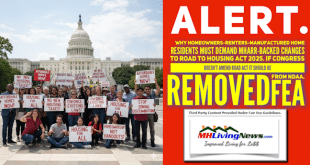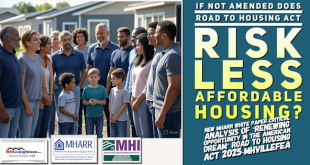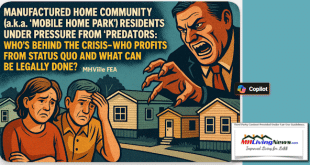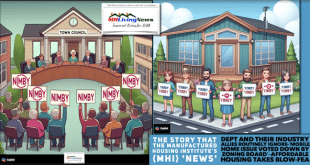In a recent op-ed to the left-leaning Washington Post Professor Lee Ohanian and James A. “Jim” Schmitz, a senior economist at the Minneapolis Federal Reserve said the following. “Analyzing U.S. tornado deaths from 1996 to 2023, the Associated Press [AP] found that 53 percent of people who died at home — 815 people — were in manufactured houses.” MHI’s website on 5.23.2024 seems to inexplicably fail to use video footage by NBC News that they had staff present for during the wind test conducted by the Insurance Institute for Business & Home Safety (IBHS) on a HUD Code manufactured home subjected to hurricane force winds. That portion of the video posted below starts at about the 3:50 mark and is part of a longer compilation of videos from a range of identified sources shown below.
The video below reveals that when conventional housing, much commercial construction, or manufactured homes are hit by a tornado, they are often severally damaged or destroyed. The point of this article isn’t that there is no risk from tornadoes. There is, but the risk is minimal, and some common sense can reduce it still further.
The still screen in the video below is of a conventional housing neighborhood hit by a tornado. It had numbers of conventional houses obliterated. Some single-family housing units were severally damaged. Others in that devastated site-built (conventional) housing neighborhood have debris in their yards, but the houses are seemingly intact. Tornadoes are studied in part because there is still much to be learned about them.
But what that AP report should mention is this. Of the 815 people they assert died who lived in a manufactured home, rightly or wrongly, some of them may have died outside of their residence fleeing their home on the advice of weather reports. That’s according to statements made by the National Weather Services (NWS) Greg Schoor to MHLivingNews.
On the MHI website on 5.23.2024, if someone looks hard enough, they will find this remark: “Manufactured homes perform as well as site-built homes during a storm. In fact, the explanation for the reports of damage to manufactured homes from tornadoes is quite simple: manufactured housing is largely found in rural and suburban areas where tornadoes are most likely to occur.”
But let’s go deeper into that tornado data from AP that Ohanian and Schmitz mentioned.
In that 28-year period of 1996-2023 referenced by Ohanian and Schmitz in their linked AP report, that would work out to be about 45.27 tornado-related deaths per year on average. While every premature death is tragic, what the data actually reveals is that the odds of dying in a tornado in the past 28 years for those living in a manufactured home are incredibly low.
As NWS’ Schoor explained, the way tornado statistics are gathered, some of those souls who died may have been outside of their residence. But let’s ignore his expert statement on that point for discussion’s sake for the next few moments. Regardless of where or how those 45 and a quarter lives lost annually for 28 years occurred for mobile and manufactured home residents, and using the estimated total of 22 million Americans living in mobile or manufactured homes, here is what the math on that would look like. 45.2777777778/22,000,000 = 0.00000205808.
Meaning, the odds are 99.999997942 in favor of every soul living in a mobile or manufactured home that they won’t die in any given year from a tornado.
To put that into more context, per Google’s AI overview on this date: “According to the CDC, over 17,000 people in the US die each year from injuries caused by slips, trips, and falls in the bathroom.”
So, slipping and falling in the bathrooms in conventional housing could be some 375 times ‘riskier’ for accidental death than is the risk of dying during a tornado in a mobile or manufactured home in any given year from 1996-2023.
Why isn’t such math used by MHI, or others in MHVille trade media beyond MHLivingNews or MHProNews?
What the tornado data, properly unpacked, revealed is that manufactured housing is far safer than most people are led to believe.
Dr. Ben Carson, while he was HUD Secretary during the Trump era, did a reasonably good job of making that point and he did so repeatedly. Yet, MHI fails to have the speech on their website that Dr. Carson delivered to their organization, which mentions things such as manufactured homes in windstorms? Again, whose side is MHI on anyway?
MHProNews Note: to expand this image below to a larger or full size,
click the image and follow the prompts.
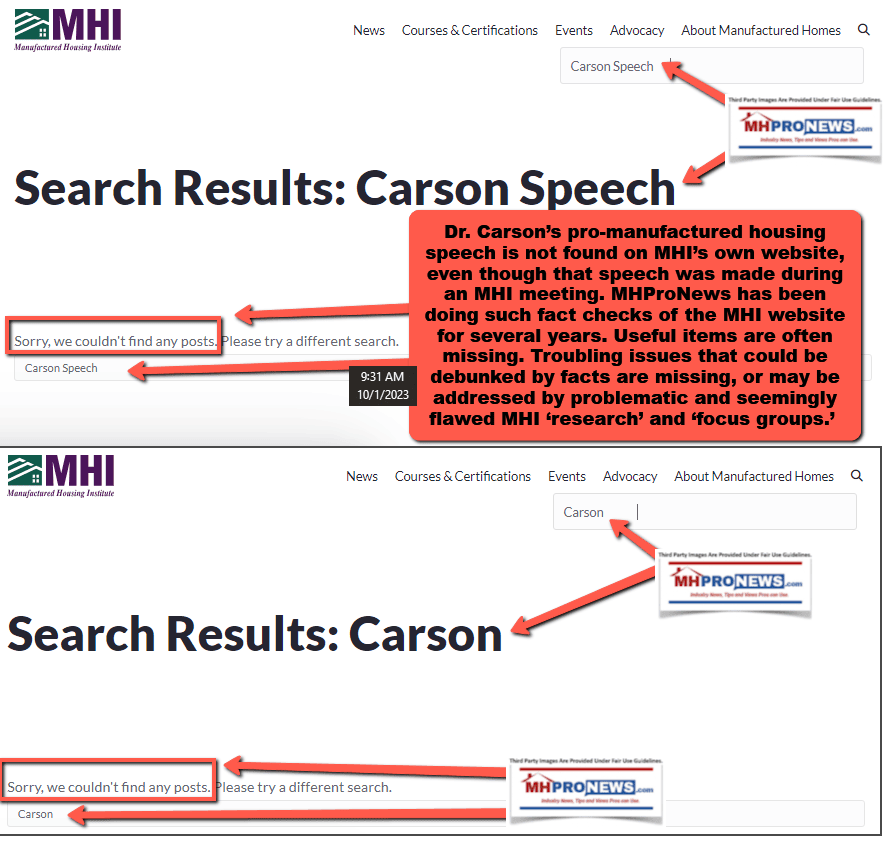
From that speech on the HUD website and MHLivingNews by Dr. Carson to MHI were these remarks.
“On a recent visit to Alabama, I was shown a site that was demolished by massive tornadoes – and the only homes in the area that successfully weathered the storm were manufactured houses. It was a silent testament to their resilience. It is also possible that HUD’s work with industry leaders to update wind Standards for manufactured housing in 1994 could have helped to limit damage and potentially save lives.”
Why doesn’t that comment by a prior HUD Secretary find its way onto the MHI website under their tornado and windstorm FAQs?
As the screen capture above reveals, MHI’s website is somewhat akin to George Orwell’s memory hole in the dystopian novel Nineteen Eighty Four (1984), where information that doesn’t fit an organizational narrative goes to vanish from public sight. After all, MHI is supposed to be the post-production trade group. MHI is supposed to be promoting, educating and protecting (a.k.a.: P.E.P.) on behalf of the industry in the post-production space. But instead, they seem to be focused on the consolidation of the industry.
The fact that the Manufactured Housing Association for Regulatory Reform (a.k.a.: MHARR), with no post-production dues being collected from companies, does anything at all that is post-production related is a testament to how far they are attempting to go to counter not only problematic regulations. But it also reflects that MHARR is attempting to mitigate the problematic behavior by the larger and far better funded national manufactured housing trade group that calls themselves the Manufactured Housing Institute (MHI or “the Institute”).
But the bottom line with respect to tornadoes is this. There is a need to better understand the data and the evidence. The odds are, using the AP cited data, that over 99.99 percent of those living in a mobile or manufactured won’t die in any given year due to a tornado. To learn more, see the reports linked below.





We lay out the facts and insights that others can’t or won’t do. That’s what makes our sister site and this location the runaway leaders for authentic information about affordable housing in general, the politics behind the problems, and manufactured homes specifically. That’s a wrap on this installment of “News through the lens of manufactured homes and factory-built housing” © where “We Provide, You Decide.” © ## (Affordable housing, manufactured homes, reports, fact-checks, analysis, and commentary. Third-party images or content are provided under fair use guidelines for media.) (See Related Reports, further below. Text/image boxes often are hot-linked to other reports that can be access by clicking on them.)

By L.A. “Tony” Kovach – for MHLivingNews.com.
Tony earned a journalism scholarship and earned numerous awards in history and in manufactured housing. For example, he earned the prestigious Lottinville Award in history from the University of Oklahoma, where he studied history and business management. He’s a managing member and co-founder of LifeStyle Factory Homes, LLC, the parent company to MHProNews, and MHLivingNews.com. This article reflects the LLC’s and/or the writer’s position, and may or may not reflect the views of sponsors or supporters.
Connect on LinkedIn: http://www.linkedin.com/in/latonykovach
Recent and Related Reports:
The text/image boxes below are linked to other reports, which can be accessed by clicking on them.

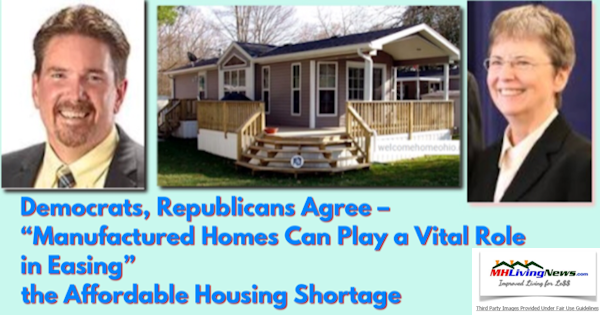
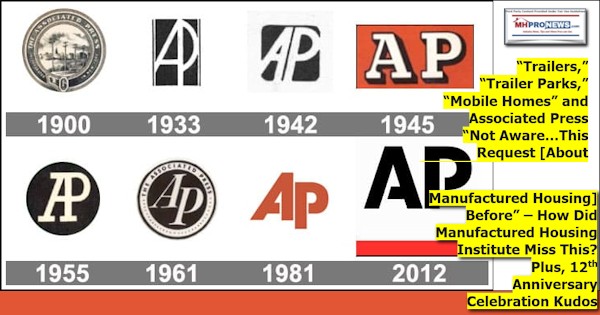
 manufacturedhomelivingnews.com Manufactured Home Living News
manufacturedhomelivingnews.com Manufactured Home Living News





